Why am I Gaining Weight Despite Diet and Exercise? │ QA
If you’re careful with your nutrition, working out weekly, and still experiencing problems with your weight, take a moment to read this QA.
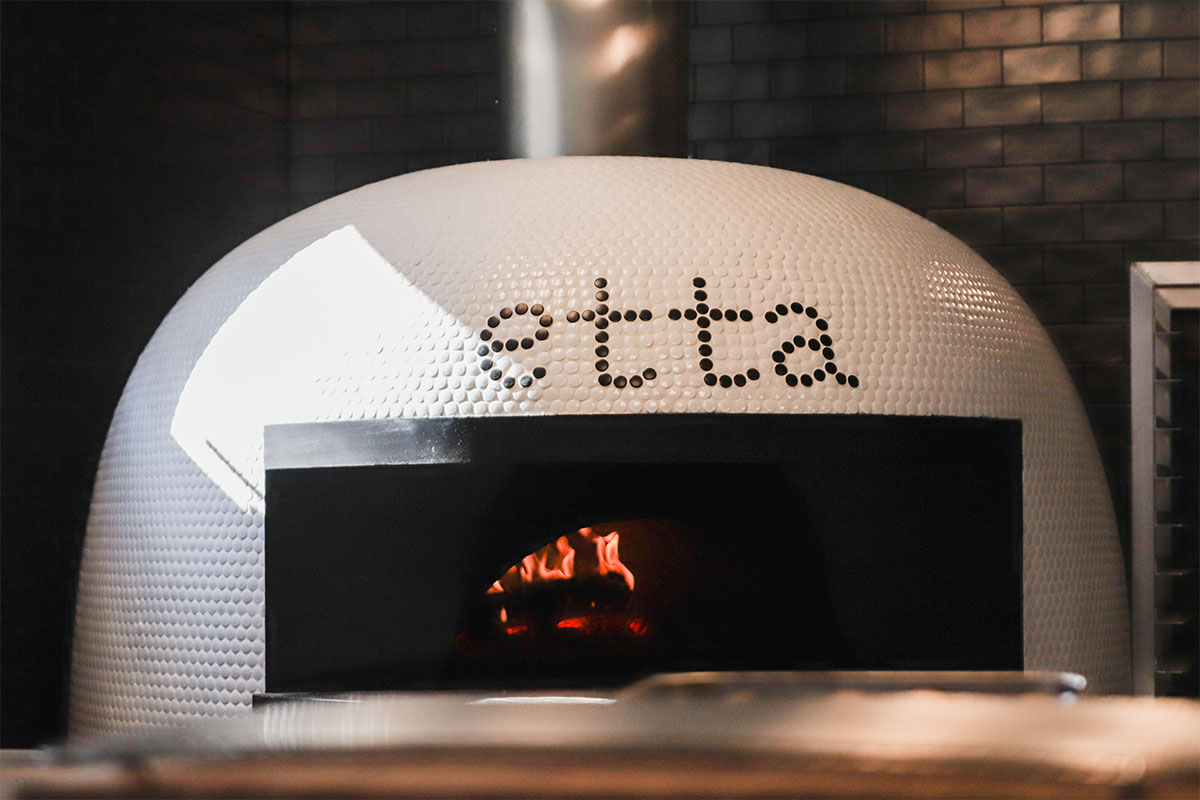
“Healthy eating is important and knowing where your food comes from is what makes it special. We serve only the freshest and finest ingredients our local community has to offer. We work with numerous small producers in the Midwest to showcase the highest quality product available across our menu. Our relationships with these farmers and producers allow us to push for constant improvement in the quality of their product, and in turn, we treat their ingredients with the utmost care.”
More about etta:
Paying homage to the meaning behind its namesake, Henrietta – keeper of the hearth, etta is the latest project by award-winning chef Danny Grant and What If Syndicate. Located in Chicago’s bustling Bucktown area, etta is a light-hearted neighborhood restaurant that serves simple and seasonal wood-fired food. Opened in July 2018, etta focuses on classics done well in a fresh way. Showcasing a seasonally inspired and thoughtfully crafted menu that utilizes its wood-fired hearth in unique ways, etta offers a selection of salads, house-made pastas, pizzas as well as weekend brunch. Re-creating both the food and experience of dining at chef Grant’s home, etta’s concept is straightforward – to cook and serve simple, honest food thoughtful of the season and its guests.
etta is located at 1840 W. North Ave., Chicago, IL 60622. Open Monday through Thursday from 5pm to 10pm, Friday from 4:30 to 11pm, Saturday from 10am to 2pm and reopens for dinner from 4:30 to 11pm, and Sunday from 10am to 2pm and again from 4:30pm to 9pm. For the menu and additional details, please visit ettarestaurant.com.

Photo Credit: Rachel Bires

Photo Credit: Rachel Bires

Photo Credit: Rachel Bires

For the Dish
Step 1:
Step 2:
Step 3:
Serves 4
Featured Recipes
If you’re careful with your nutrition, working out weekly, and still experiencing problems with your weight, take a moment to read this QA.
Blood sugar control isn’t easy. These are Debbie’s top recommendations for how to address weight control with Type II Diabetes.
It's easier to work hard when you’ve got a game plan. Here are some options to help keep you moving until the last second of your workout!
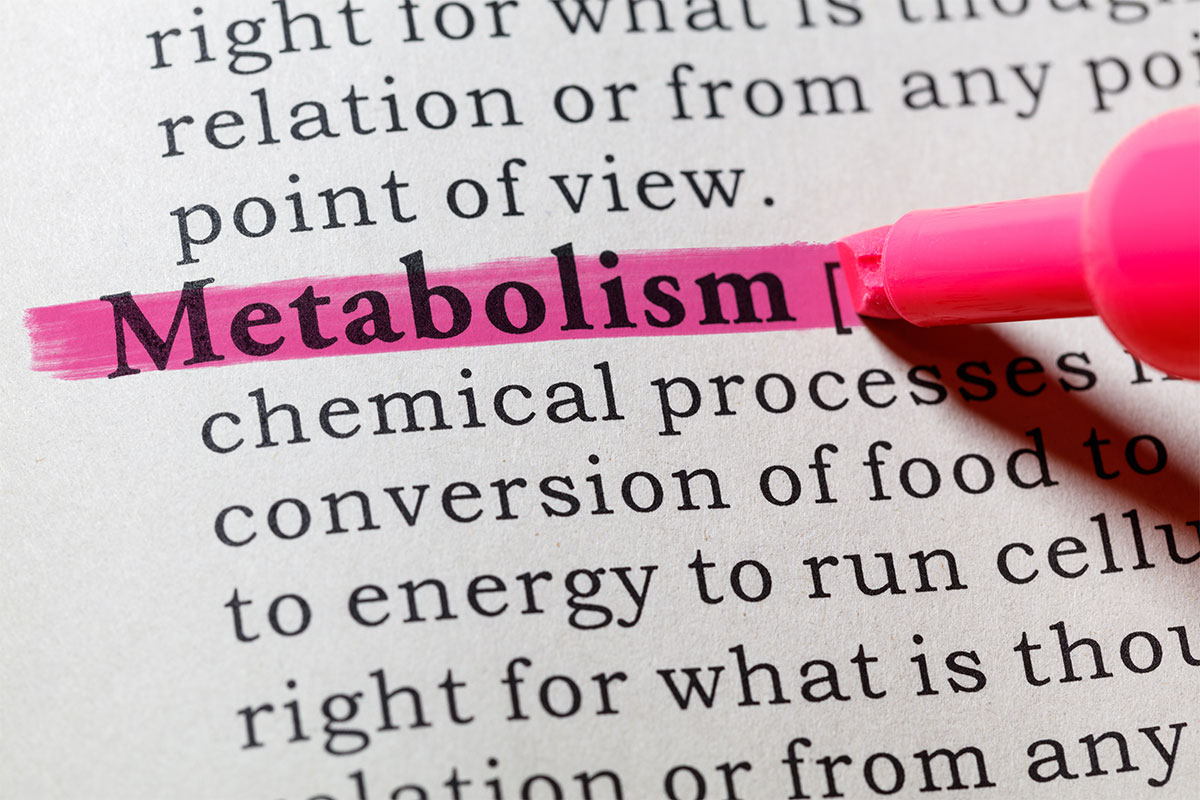

I have been eating a lot less, not meeting requirements, gaining weight, and noticing muscle loss. I’ve noticed a lowered metabolism and inflammation from stress. What can I do to fix these things?
– Angela M.

That is surely a mixed bag of concerns, Angela. Address the first problem you mentioned based on why you think you are eating a lot less. Time constraints? Opt for healthy convenience foods like prepackaged bowls. Depression/anxiety? Engage with others during mealtime and include a few favorite comfort foods. To meet micronutrient needs at least, you can add a daily multivitamin/mineral to cover your bases until your intake improves. Physical activity is the main option to stimulate metabolism. While resistance exercise builds muscle, aerobic exercise burns calories to tackle both your physique concerns. Incorporate more anti-inflammatory foods to combat the effects of chronic inflammation.
These include tomatoes, olive oil, green leafy vegetables, nuts, fatty fish, berries and citrus fruit.1 Lastly, practice good stress-management techniques. In addition to exercise, you can step away from the stressor, smile & laugh, reach out to a trusted friend, and meditate.2
References:
– Debbie J., MS, RD
This article should not replace any exercise program or restrictions, any dietary supplements or restrictions, or any other medical recommendations from your primary care physician. Before starting any exercise program or diet, make sure it is approved by your doctor.
Some questions have been edited for length and/or clarity.
 Have a nutrition question? Our registered dietitian is ready to help!
Have a nutrition question? Our registered dietitian is ready to help!
Email nutrition@lafitness.com or submit your question below and it may be featured in an upcoming article!
If you’re careful with your nutrition, working out weekly, and still experiencing problems with your weight, take a moment to read this QA.
Blood sugar control isn’t easy. These are Debbie’s top recommendations for how to address weight control with Type II Diabetes.
It's easier to work hard when you’ve got a game plan. Here are some options to help keep you moving until the last second of your workout!
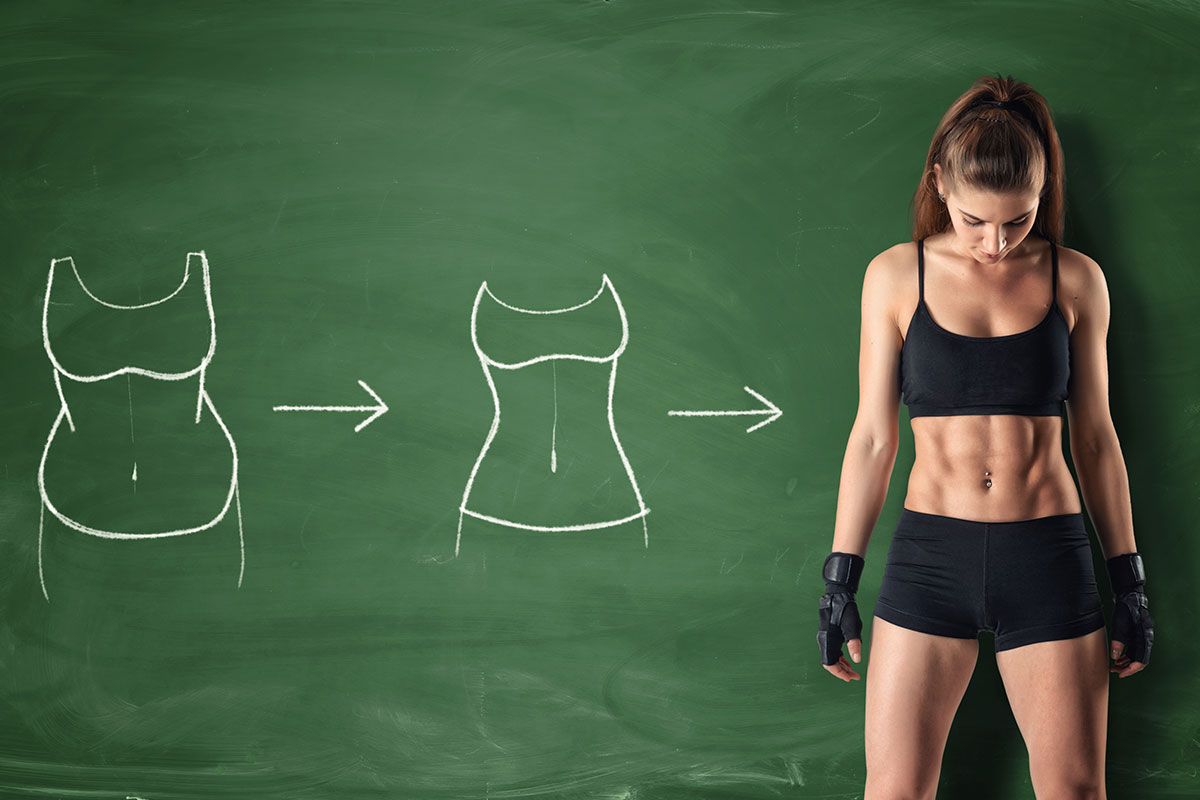
When that little extra cushioning suddenly turns into the spare tire you never wanted, chances are you’re starting to think about ways to quickly shed that excess fat and replace it with muscle.
To successfully make this happen, it’s important to first understand some facts about fat and muscle.

Most people know that obesity can lead to a laundry list of health concerns, including (but not limited to):
It’s not that all fat is bad for the body. In fact, our body needs fat to function. The idea instead is to get rid of excess fat that can cause damage to the body, create a sense of sluggishness, and lead to feelings of discontent.
Yes… and no. But, mainly yes!
Here’s why:
Cardio increases heart rate fast and typically burns more calories than weight lifting does. Because you’ll want to burn off the fat first, before focusing more on muscle building, cardio-forward workouts may be the most beneficial for those looking to lose fat – although, cardio should be combined with weight training for a balanced workout routine.
A few cardio exercises that are known for high levels of calorie burn include HIIT*, cycling, running, or use of the elliptical machine.
*Learn more about HIIT by LAF®.
Of course, there are other cardio options that may sound more appealing to some. These options include Group Fitness classes like Zumba® or sports leagues*.
*Check out LA Fitness Group Leagues here.

Check out this episode of Ask A Trainer with Master Trainer, Stone Thomas, who helps further answer if cardio or strength training is better for weight loss.
While it would be so much nicer if it were possible to just target a certain area of the body, it’s not realistic. That’s just not how fat loss works.
LA Fitness Pro Results® trainer, Kayla V., explains it more in the video below and gives tips on what can be done to increase weight loss overall.
http://bloglafitness.azurewebsites.net/2018/02/09/best-exercises-stomach-fat/
Consuming more calories than what your body is expending will, at the very least, lead to a weight loss plateau (if not weight gain).
In the beginning stages of weight loss, it’s so important to track your calories.
Once you have a better understanding of food proportions and how much you need to eat daily to lose weight, you can choose to stop tracking calories and just eat smaller, healthier options when your body signals that it’s hungry.
There are plenty of online options available to help better understand healthy eating and portion control.
And, if you’re an LA Fitness member, we have a special section called “Ask Our Dietitian” dedicated to answering your nutrition-related questions. Send them to us here.

Perhaps you’ve already shed the excess body fat and now you’re looking to increase your muscle mass. This is where things get fun.
Building muscle means your workouts should now encompass more weight training. To build muscle, rather than simply retain what you already have, you should increase your weight and decrease the number of reps you’re doing.
When questioning why our bodies tend to become tired and sore after working out, LA Fitness registered dietitian Debbie James, RDN shared “Since your muscles are sore, their cellular metabolism needs to be restored to normal. You might need more sources of potassium and anti-inflammatory compounds.”
These include:

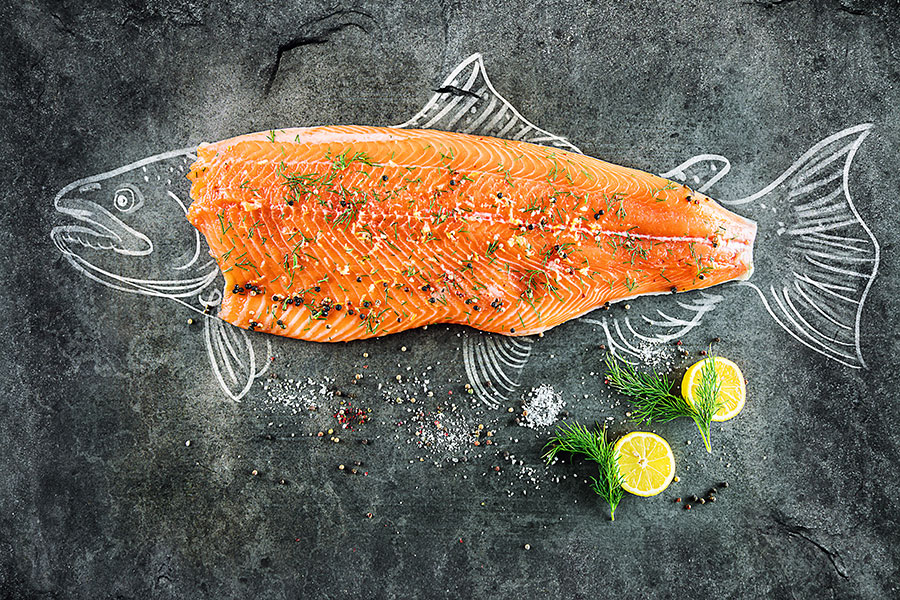
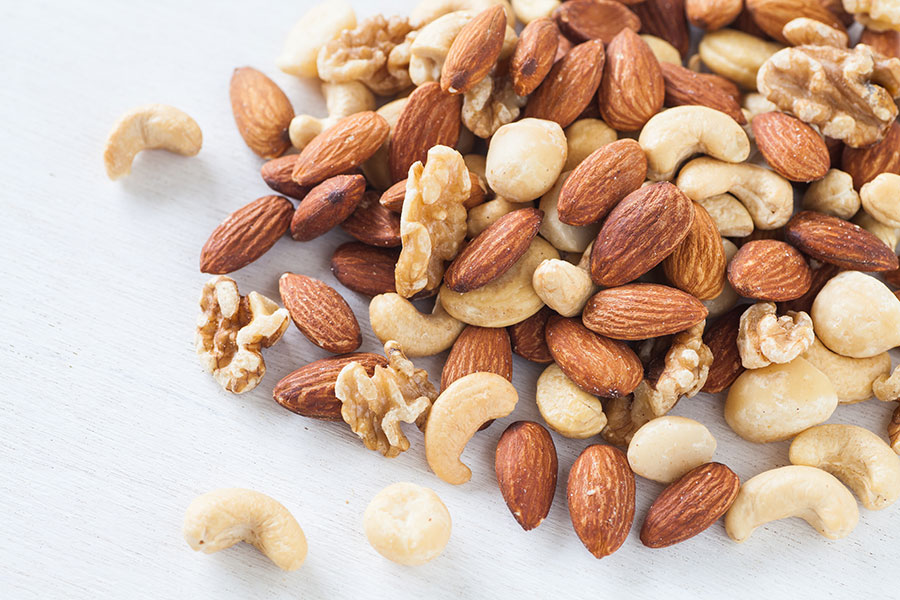
When you start training harder and more frequently, your body is going to need more calories because your body is going to be burning more energy.
This is where it might get tricky for someone who was formally at an unhealthy body weight.
You’ve heard it over and over again: “Cut calories and you’ll lose weight.”
So, you’ve become conditioned to eating less, but now your goal has changed. You’re no longer looking to drop fat; you’re looking to build muscle.
If you keep working out and not consuming enough calories the body begins breaking down the muscle you have, rather than repairing it or building it.
This is why protein should be your best friend when it comes to building muscle.
That lean-look, or definition of muscles, will come with time after body fat percentage is dropped and strength training has increased.
Understanding how to take your body from overweight to healthy and in shape sometimes takes the help of professionals. If you’ve found yourself struggling to make the transition on your own, it may be time to investigate personal training or dietic consulting.
Living a healthy lifestyle can be done by anyone, at any age, at any time.
All you have to do is get started.
Share what made you make the change in the comments below!
If you’re careful with your nutrition, working out weekly, and still experiencing problems with your weight, take a moment to read this QA.
Blood sugar control isn’t easy. These are Debbie’s top recommendations for how to address weight control with Type II Diabetes.
It's easier to work hard when you’ve got a game plan. Here are some options to help keep you moving until the last second of your workout!


Will taking beet root help me gain muscle? How does it work?

The evidence for beetroot supplementation is slowly gaining ground. Some studies show that it may be helpful for intermittent, high-intensity workouts as well as endurance training. Surprisingly, as a newer ergogenic aid, beetroot juice (BJ) has already met the Australian Institute of Sport’s highest evidence classification for effectiveness – joining beta-alanine, caffeine, creatine, glycerol, and bicarbonate – at threshold doses for certain situations in sport.
Beetroot, like several green leafy vegetables, has very high nitrate levels. According to a laboratory assay, about 100 ml (~3.5 fl oz) of beetroot juice provides between 48-150 mg nitrate and 10 grams of beetroot powder provides 165 mg nitrate, whereas studies generally used 300-600 mg of nitrate.
Beetroot juice’s effect may come from nitrate’s role as a precursor to nitric oxide, a vasodilator which can enhance oxygen delivery to muscle tissue. A review of 9 studies concluded that “the improvements observed were attributed to faster phosphocreatine resynthesis which could delay its depletion during repetitive exercise efforts. In addition, [BJ] supplementation could improve muscle power output via a mechanism involving a faster muscle shortening velocity.”
As with all ergogenic aids, the theory is that by enabling stronger/longer workouts, the increased output will promote muscle growth. Currently, the magnitude of research supports beetroot juice’s impact on performance, not body composition. So keep working out!
– Debbie J., MS, RD
This article should not replace any exercise program or restrictions, any dietary supplements or restrictions, or any other medical recommendations from your primary care physician. Before starting any exercise program or diet, make sure it is approved by your doctor.
Some questions have been edited for length and/or clarity.
 Have a nutrition question? Our registered dietitian is ready to help!
Have a nutrition question? Our registered dietitian is ready to help!
Email nutrition@lafitness.com or submit your question below and it may be featured in an upcoming article!
If you’re careful with your nutrition, working out weekly, and still experiencing problems with your weight, take a moment to read this QA.
Blood sugar control isn’t easy. These are Debbie’s top recommendations for how to address weight control with Type II Diabetes.
It's easier to work hard when you’ve got a game plan. Here are some options to help keep you moving until the last second of your workout!

Welcome to the 26th episode of the Living Healthy Podcast, presented by LA Fitness.
On this **SPECIAL EDITION** of Living Healthy, it’s a fitness vs. nutrition showdown with guest experts Debbie James, RDN and LA Fitness Master Trainer, Geoff Fox. Who will be crowned the winner on this episode’s battle of the brains? Listen and find out!
And play along with us and let us know how you did! 🙂
How Are We Doing?
Special Shout-out
Thanks to our listeners who have sent in emails letting us know what you think of the show! Special shout out to Juliana M. who recently wrote in and said:
“I just wanted to say thank you because your podcasts are helping me transition into a healthier lifestyle especially after listening to episode 20 on fast food […] maybe one of your future podcast should be about vegetarian and vegan [options] talking about if it’s healthy or if we actually need meat. I’m on the crossroads.”
Well, Juliana, we heard you and we think that’s a great idea, so keep an eye out for our upcoming episode on The Plant-Based Diet: What You Need to Know.
This podcast should not replace any exercise program or restrictions, any dietary supplements or restrictions, or any other medical recommendations from your primary care physician. Before starting any exercise program or diet, make sure it is approved by your doctor.
Intro
Begins at 0:01
Introduction of LAF Registered Dietitian, Debbie James, and LA Fitness Master Trainer, Geoff Fox
0:52
Rules Announced
1:30
Round 1 – The Fitness Round – Begins!
2:26
Round 2 – The Nutrition Round – Begins!
7:50
Round 3 – The LA Fitness Trivia Round – Begins!
16:00
The Winner is Announced!
27:00
Special Member Shout-out
and Outro
27:39
If you’re careful with your nutrition, working out weekly, and still experiencing problems with your weight, take a moment to read this QA.
Blood sugar control isn’t easy. These are Debbie’s top recommendations for how to address weight control with Type II Diabetes.
It's easier to work hard when you’ve got a game plan. Here are some options to help keep you moving until the last second of your workout!
Be the first to know about exclusive
content, deals and promotions